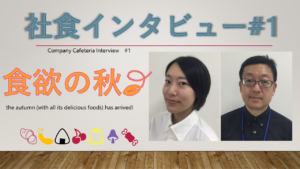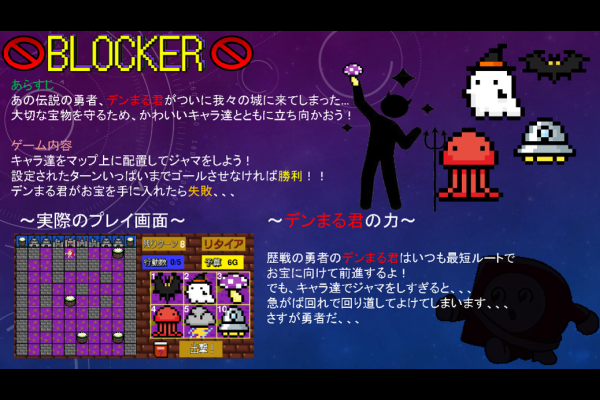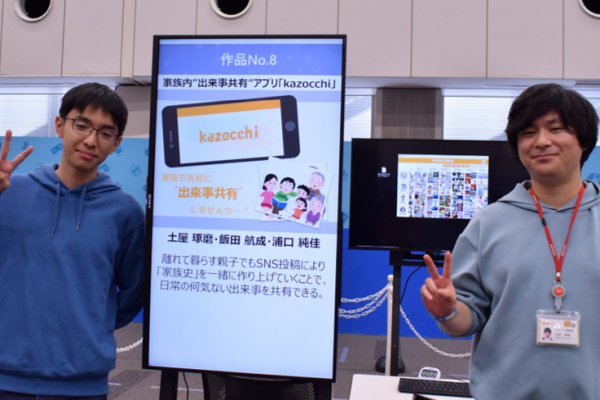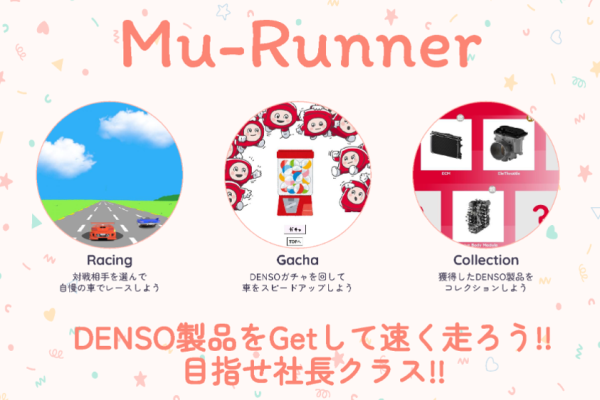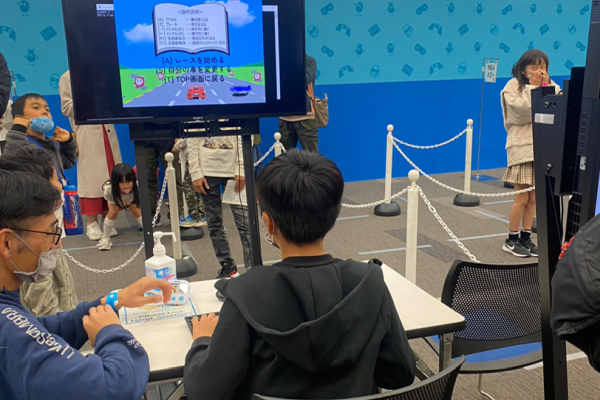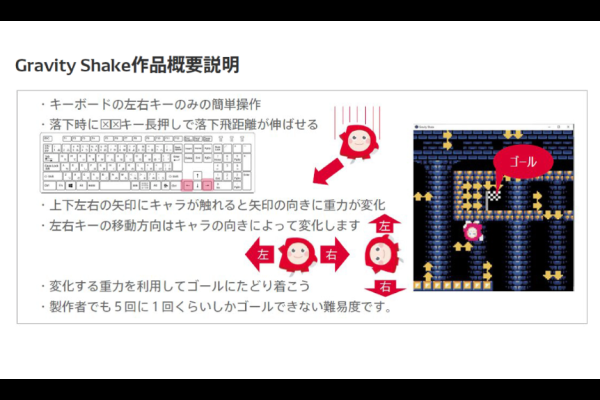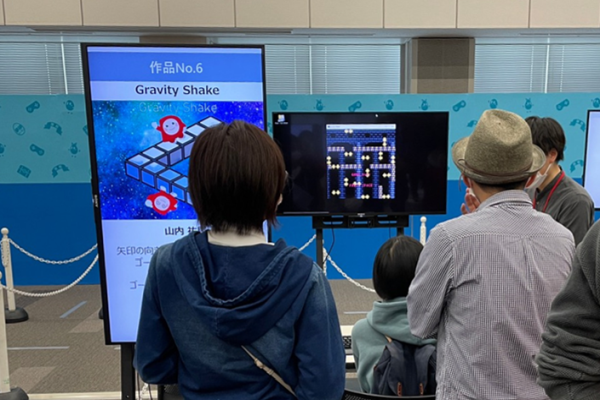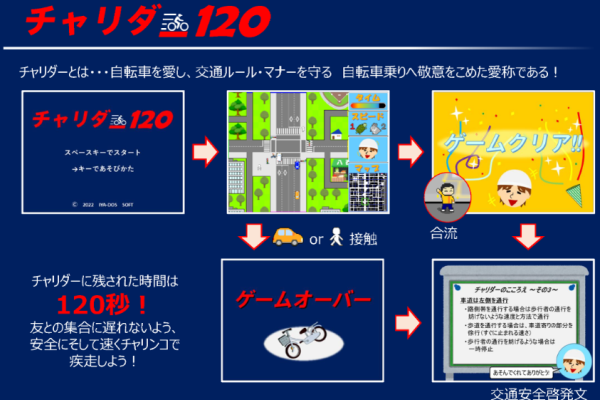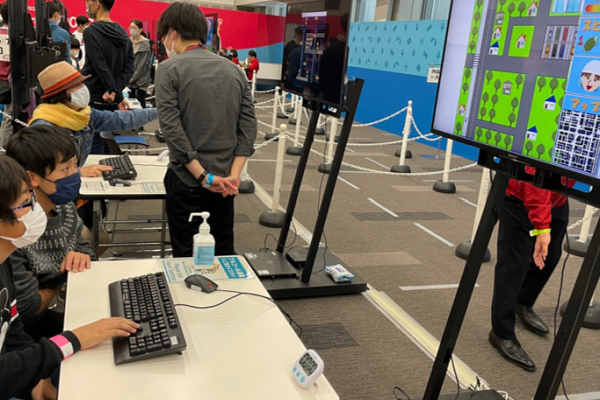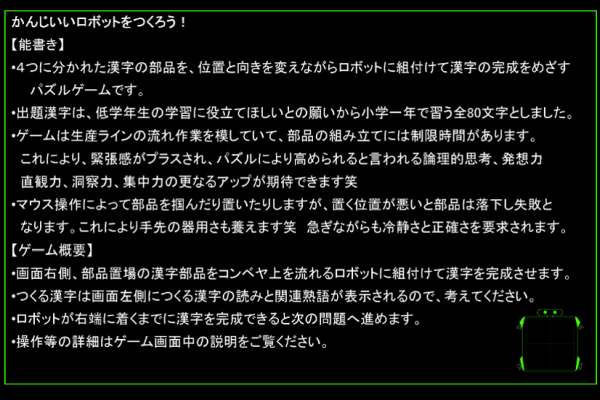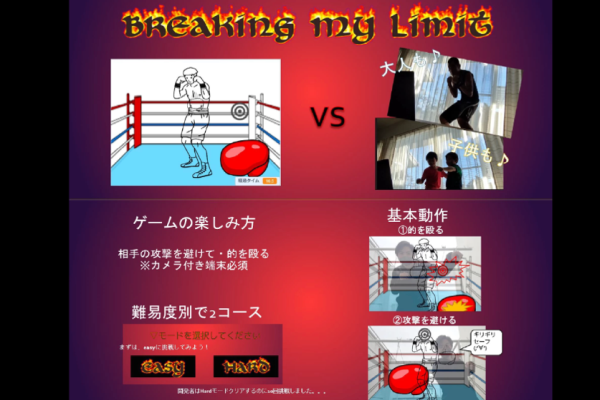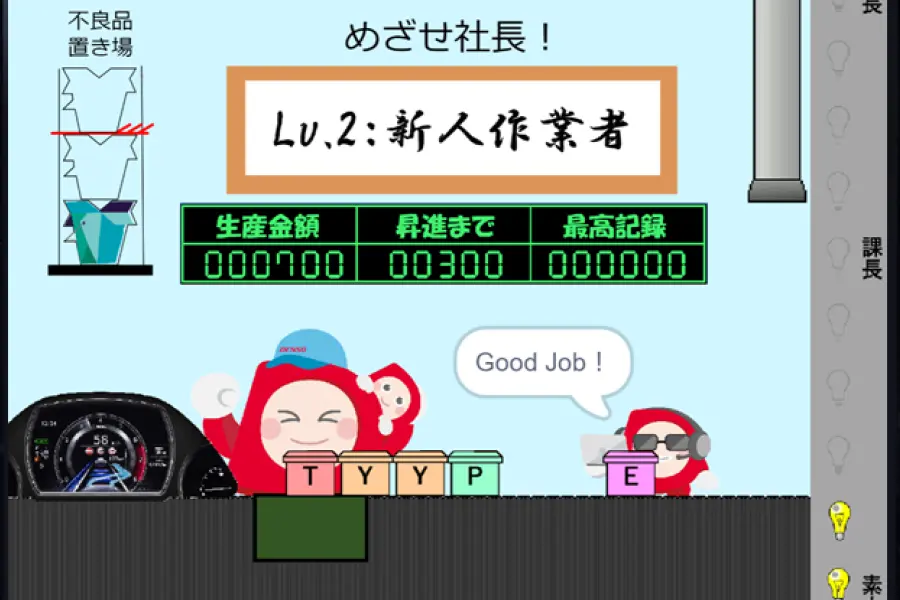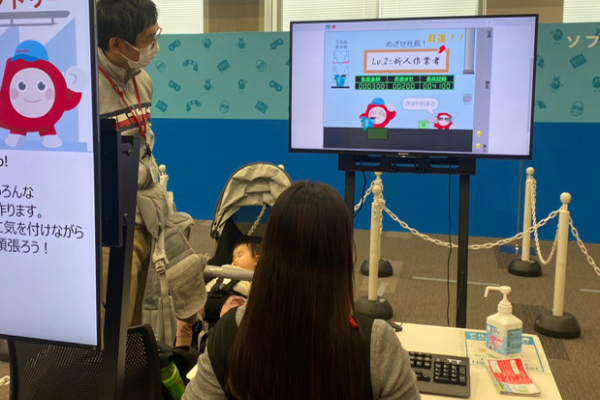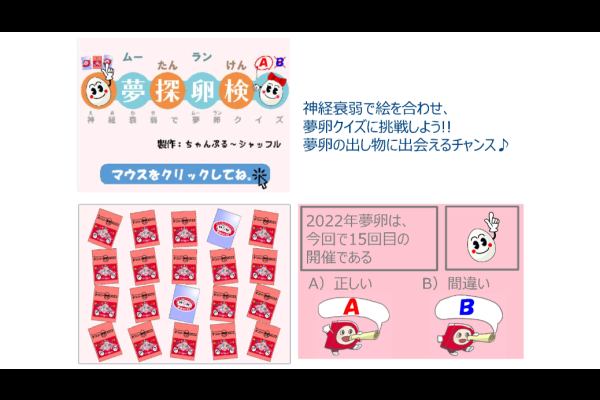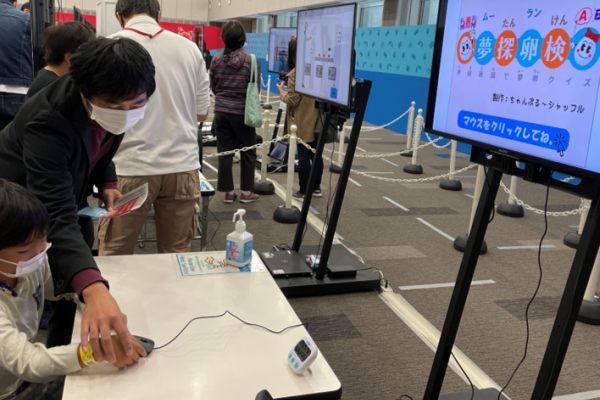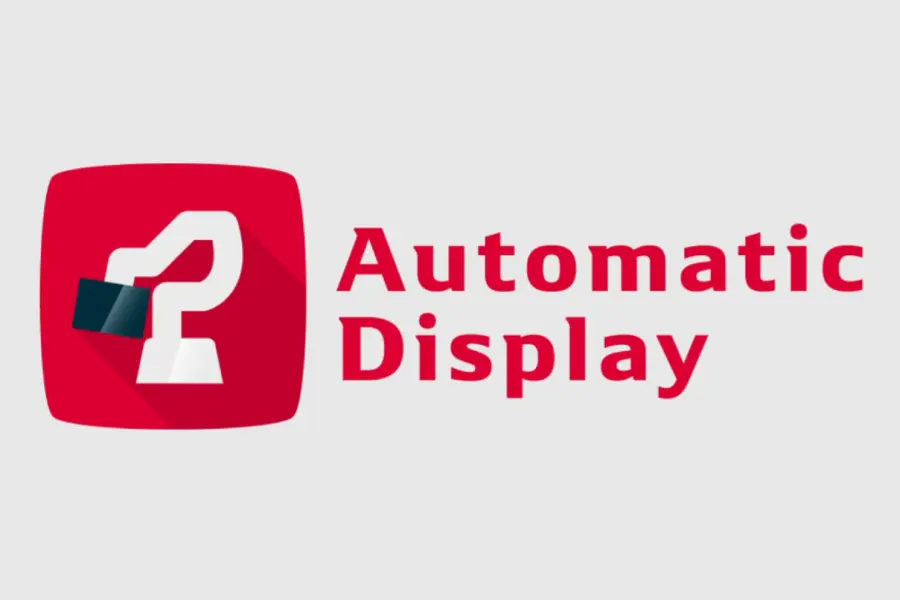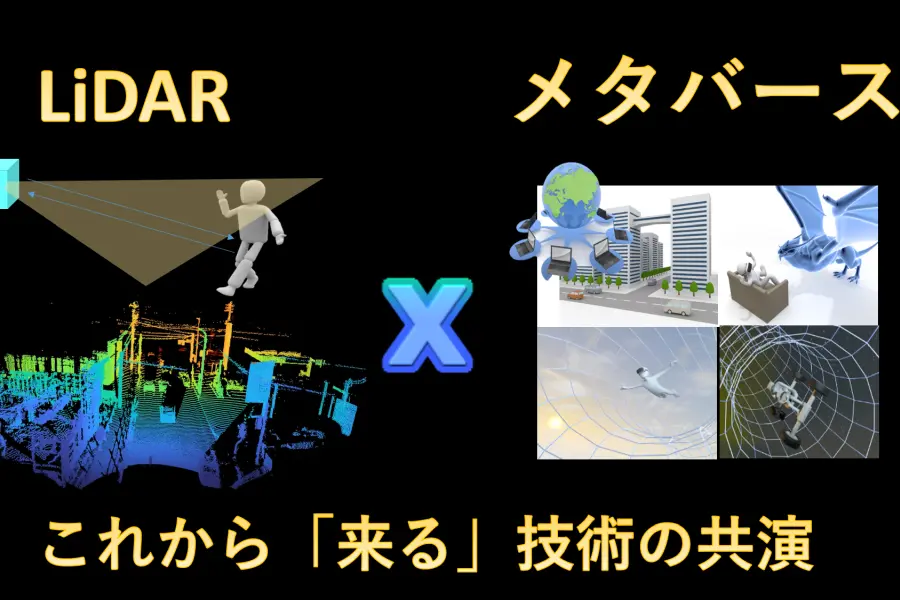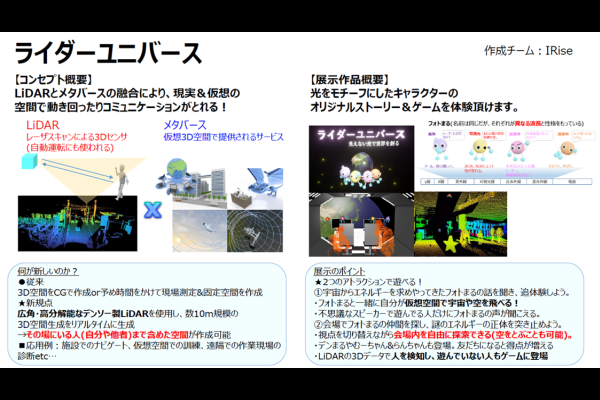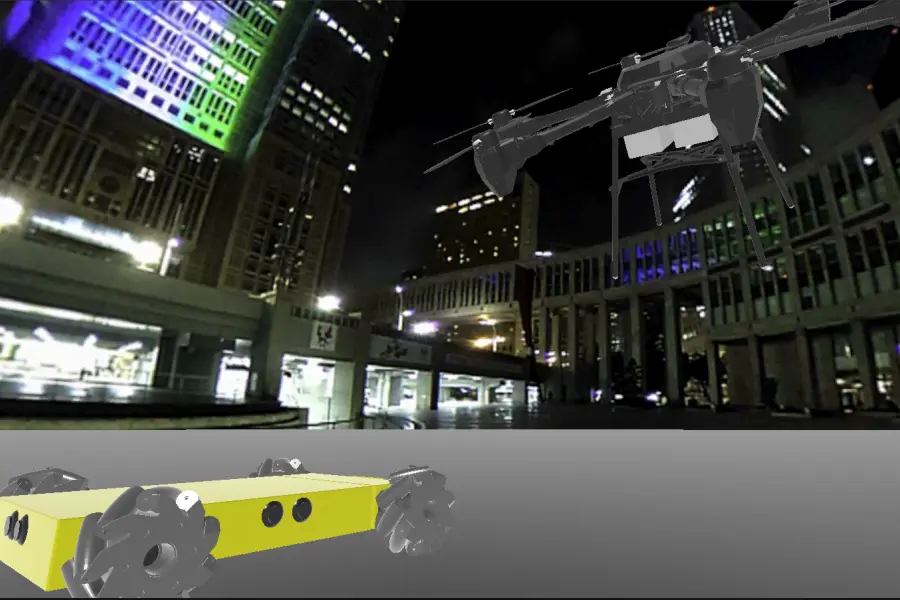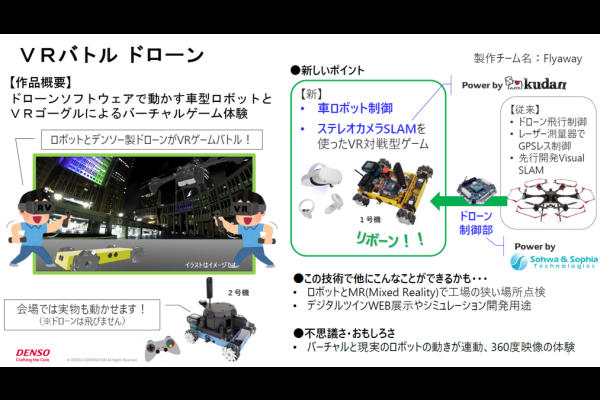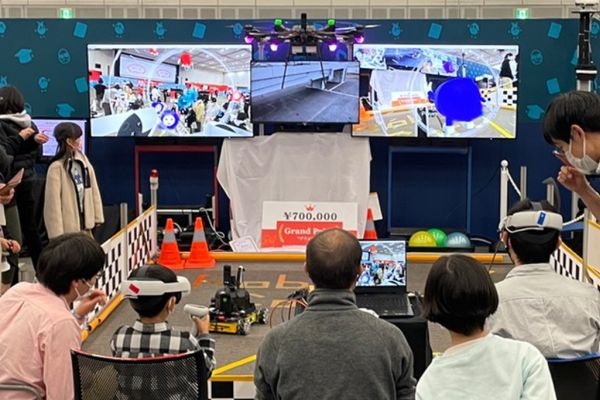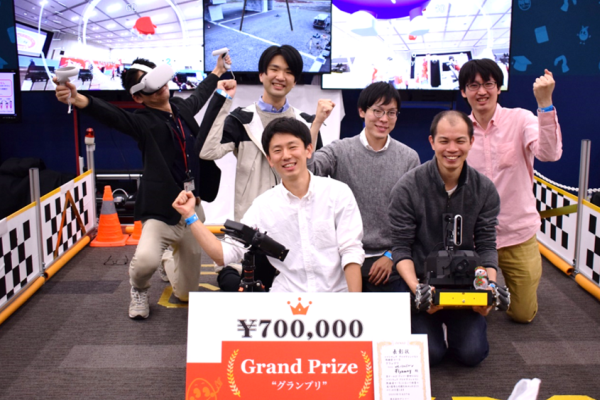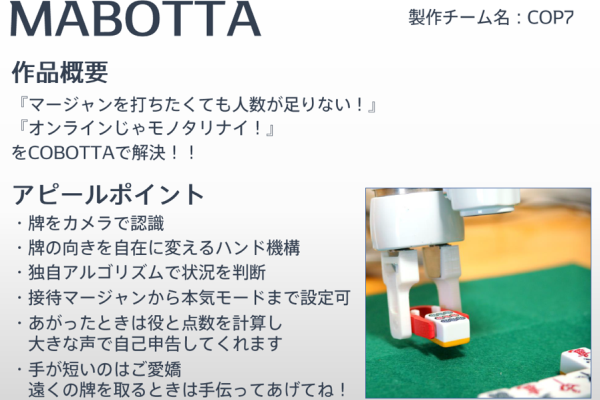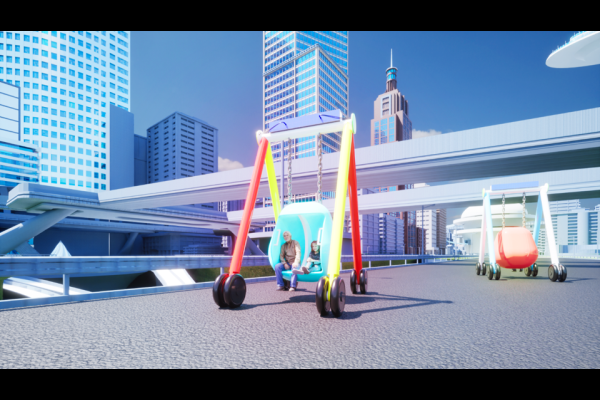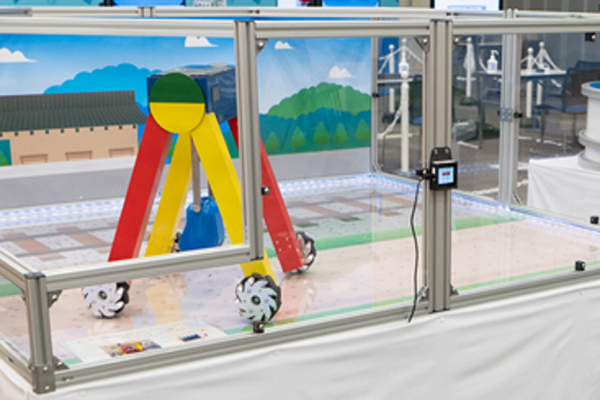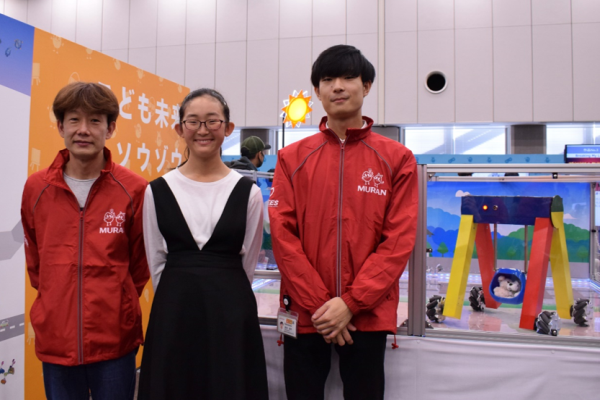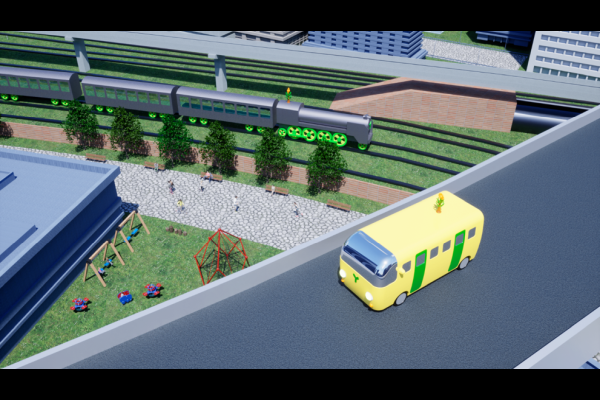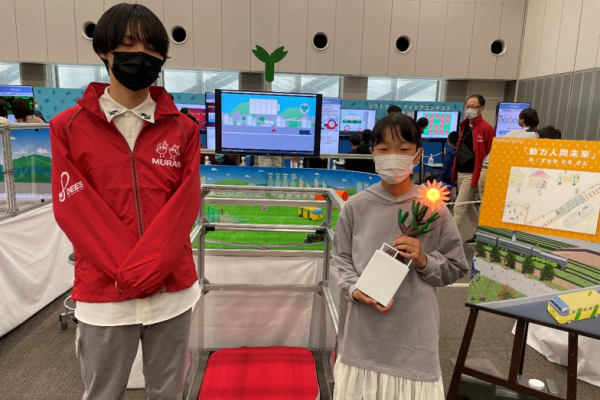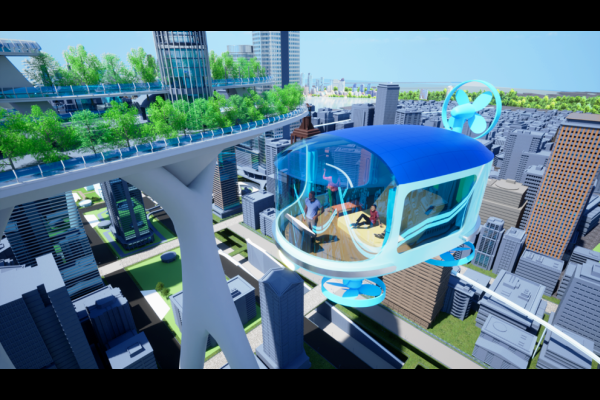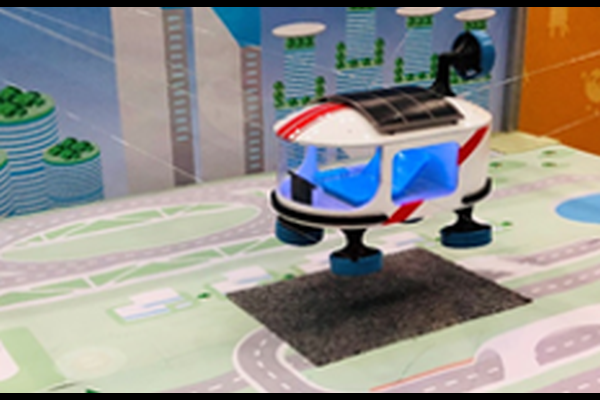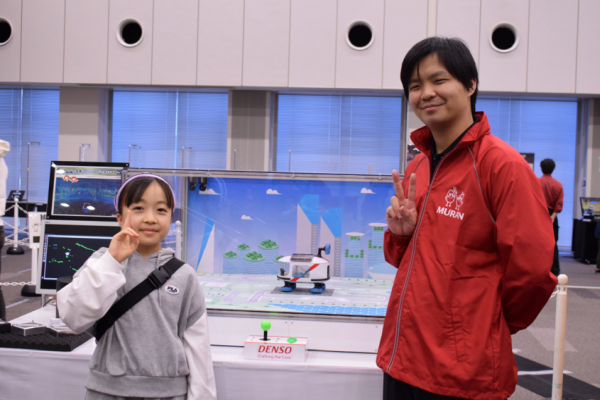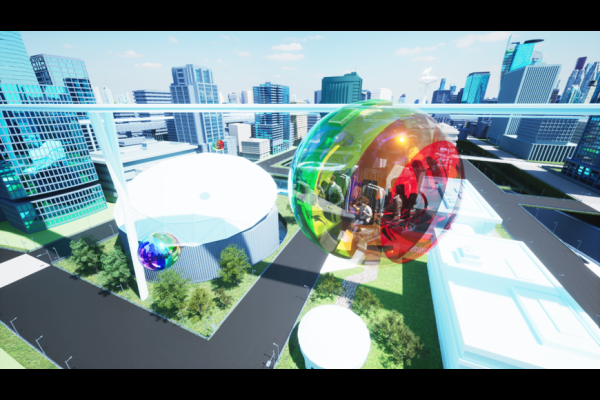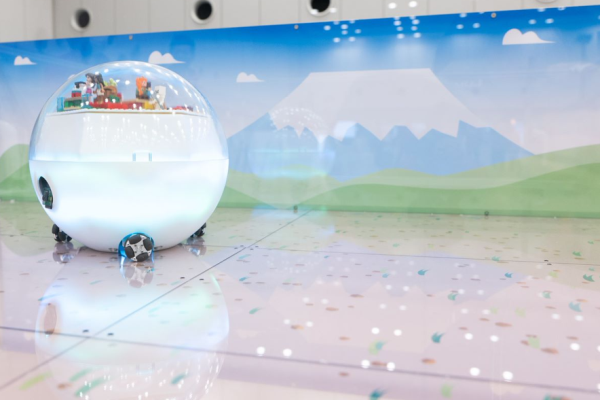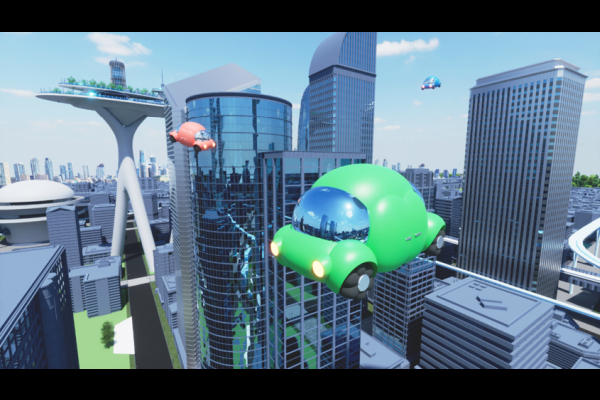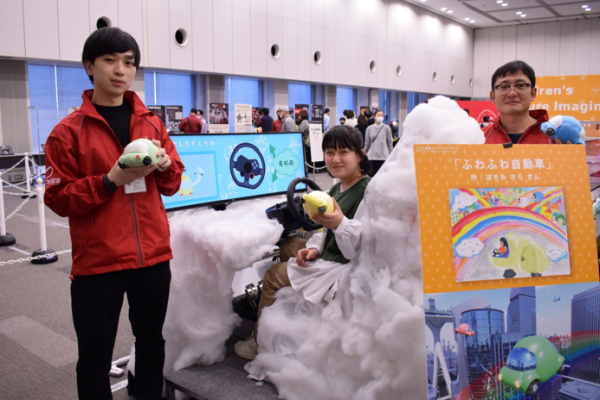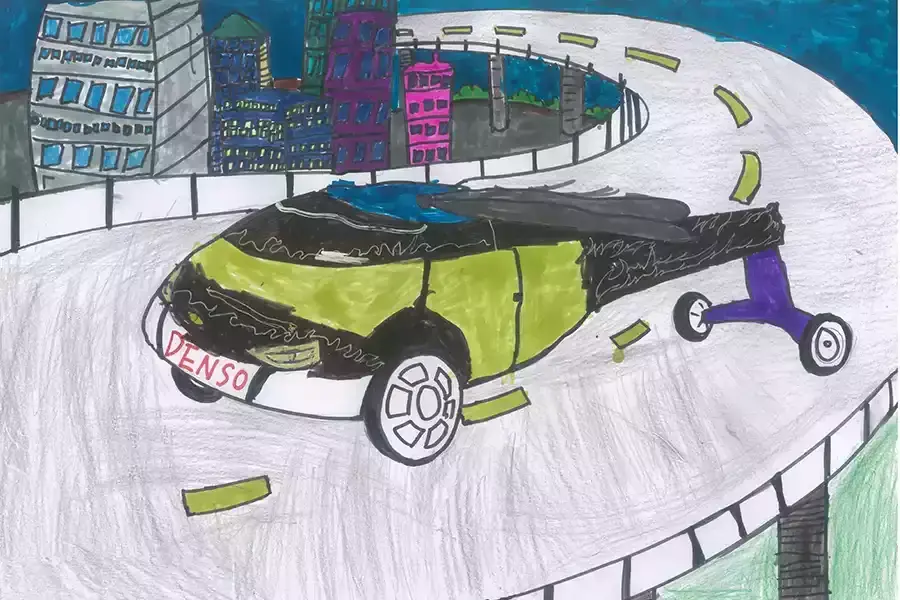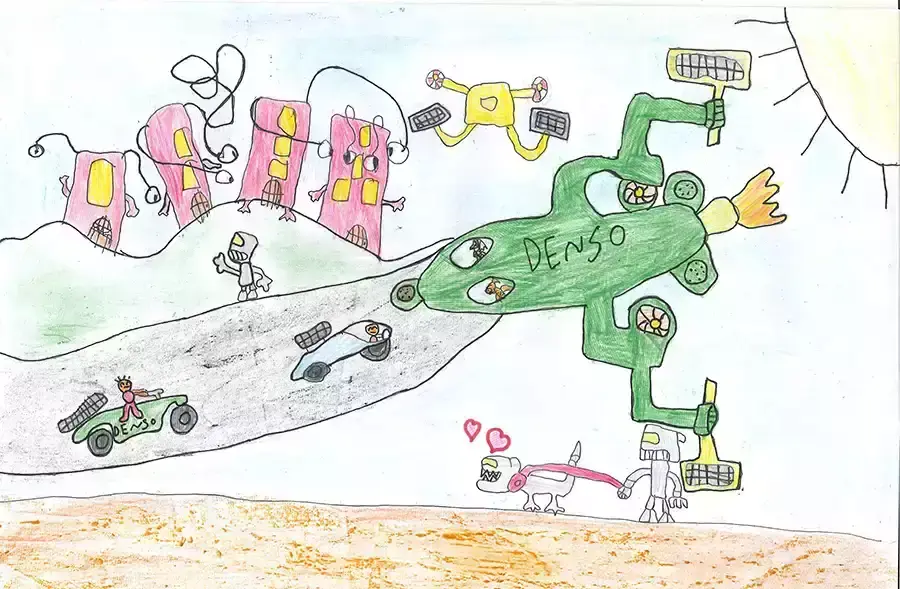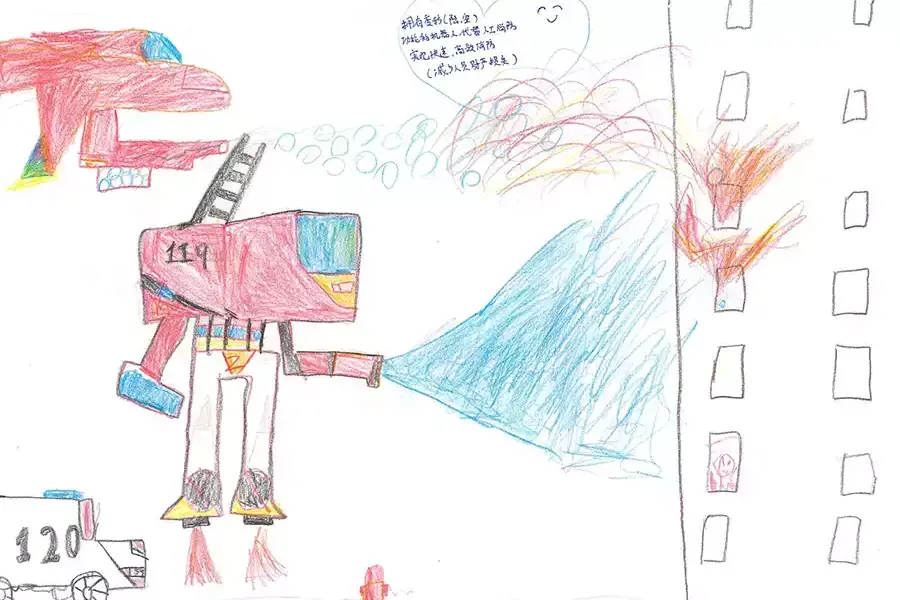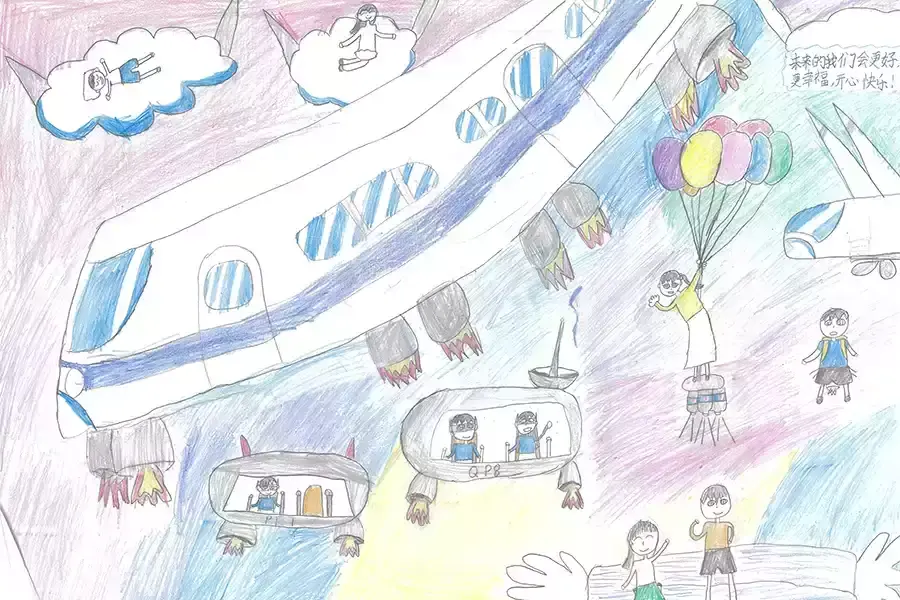Direct interview about the company cafeteria #2 (After Eating)
Hello, everyone! I’m Sayurin from MURAN 2022 Web promotion team.
The weather has cooled down considerably and the autumn (with all its delicious foods) has arrived!
Continuing from the previous article “Before Eating”, today’s report covers how the company cafeteria works and
how it is designed after the employees say “Gochisousamadeshita” (Thank you for the food).
We continued the interview with Aritaka Kimura of AIM SERVICES CO.,LTD.
Return of finished dishes and dishwashers
Q: The end of the conveyor that returns the dishes is bent at a 90° angle and I just can’t see it, what is around the corner?
A: The end of the lane leads to the sink tank of the dishwasher for washing dishes. Soaking the dishes in the sink tank filled with
chemicals eliminates unwashed dishes in the washing section of the subsequent process.

Q: Can you give me more details about the dishwasher what is consists of the sink tank and washing section?
A: The dimensions of the sink tank are 3 m (W) x 1 m (H) x 1 m (D), making it a very large tank. From there, it is transported
by conveyor to the washing section. The dimensions of the washing section are 175 cm (W) x 192 cm (H) x 95 cm (D).

Q: Do you sort the dishes first and then wash the same type all at once? Or do you wash them in the order they flow in (regardless of type)?
A: The dishes are washed in the order they flow in, sorted at the receiving end, and stored in baskets for each dish, then dried and sterilized
in the dish drying room. Chopsticks and trays are washed by hand, and trays are laid out so that they are facing each other, leaving a moderate
amount of space between them, so that every corner of the tray is dry.

Q: There is a sign near the lanes that says “Please do not put chopsticks, spoons, or forks in.” What happens if I actually put them in?
A: When chopsticks and spoons flow on the conveyor, they get caught in the wings and the conveyor stops working, which interferes
with the return of dishes. (Employees using the cafeteria, be careful!)

Q: Please tell me what you do to wash different types of dishes (bowls, flatware, etc.).
A: There is a room where dishes are washed, and when there are workers there, we can deal with problems with the conveyor, etc.
However, the room is often unmanned during non-lunch hours. Therefore, we are eliminating problems and preventing damage to
dishes by (1) opening doors, (2) installing container boxes, and (3) creating avoidance routes for dishes in areas where dish jams are likely to occur.

⇒My impressions
We need to wash dishes for a number of meals our employees eat, so we were surprised at how big the facility is anyway!
By pre-washing the dishes thoroughly in the sink tank, there are no leftovers in the washing section. Not only the dishes,
but the entire area where foods are served and the hall where meals are served give a sense of cleanliness.
Are hygiene measures also incorporated into the operational design? I also asked about this point.
Where hygiene is taken care of.
Q: What are some of the innovations in uniforms for your employees?
A: A subsidiary company provides cleaning services, so we do not wash our own clothes. We have a uniform that is regulated
by the company, but for ease of work, we have changed the cock coat to a cock shirt, and the part-timers in charge of cleaning
use T-shirts instead of uniforms.
Q: In terms of operations, in addition to the usual cleaning, what are some of your own innovations?
A: We use individual packages for all dressings, and any leftovers in the hall are disinfected with alcohol. We disinfect showcase
handles every 15 minutes during business hours.
Q: I understand that you have taken measures such as installing partitions to prevent COVID-19 infections, but what is the capacity
of the cafeteria in terms of the percentage of the number of people who were there before the COVID-19 epidemic?
Also, what is the concept of ventilation in the cafeteria?
A: The capacity is roughly less than half. There is adequate ventilation in the hall, kitchen, and serving area.
Meetings with cafeteria workers are held in the cafeteria hall as much as possible, to avoid close proximity.

⇒My impressions
I found that not only was the venue where we ate cleaned and disinfected, but also attention was paid to details such as uniforms.
Although we were only there for a short time, we felt that the fact that they had prepared an environment where we could eat
comfortably was something special, although we had taken it for granted until now.
Interviewing the cafeteria this time, I learned a great deal about how the accumulation of aspects that users do not see, such as
washing and drying dishes in large quantities and keeping the eating area clean, make up a pleasant company cafeteria.
When making changes to facilities, such as tray storage, warm storage, or refrigerator layout, it is necessary to ask permission from
the client (in this case, DENSO). However, by maintaining close contact with the client on a daily basis, they are able to strengthen
their cooperation and make improvements as soon as they feel inconvenienced.
All the better for the cafeteria workers, as they’ll be easier to work with and the food will be served faster!
Next time, we will continue with <Extras: Work at the company cafeteria>.

This article was posted by Sayurin.

